Enhancing Fairness and Efficiency in PV Energy Curtailment: The Role of East–West-Facing Bifacial Installations in Radial Distribution Networks
Abstract
1. Introduction
2. Vertical Bifacial Modules
Irradiance Calculation Model
3. Curtailment and Fairness Evaluation
3.1. Curtailment Energy Modelling
3.2. Fairness Evaluation Metrics
3.2.1. Curtailed Energy Index (CEI)
3.2.2. Jain Fairness Index (JFI)
3.2.3. Gini Index (GI)
4. Simulation Conditions
- All buses connected with mono-facial south-facing PV systems.
- All buses connected with bifacial PVs, with the front side facing east (BiE).
- All buses connected with bifacial PVs, with the front side facing west (BiW).
5. Simulation Results
5.1. Performance Analysis Across Different PV Capacities
5.2. Fairness Evaluation at 10 kW Installation Capacity
5.2.1. Highest Curtailed Energy Day
5.2.2. Lowest Curtailed Energy Days Considering BiE and BiW Installations
6. Conclusions
Author Contributions
Funding
Data Availability Statement
Conflicts of Interest
References
- Masson, G.; Bosch, E.; van Rechem, A.; de l’Epine, M.; Kaizuka, I.; Jäger-Waldau, A.; Donoso, J. Snapshot of Global PV Markets 2023 Task 1 Strategic PV Analysis and Outreach PVPS; IEA: Paris, France, 2023. [Google Scholar]
- Liu, M.Z.; Procopiou, A.T.; Petrou, K.; Ochoa, L.F.; Langstaff, T.; Harding, J.; Theunissen, J. On the Fairness of PV Curtailment Schemes in Residential Distribution Networks. IEEE Trans. Smart Grid 2020, 11, 4502–4512. [Google Scholar] [CrossRef]
- Alboaouh, K.A.; Mohagheghi, S. Impact of Rooftop Photovoltaics on the Distribution System. J. Renew. Energy 2020, 2020, 4831434. [Google Scholar] [CrossRef]
- Anzalchi, A.; Sundararajan, A.; Moghadasi, A.; Sarwat, A. High-Penetration Grid-Tied Photovoltaics: Analysis of Power Quality and Feeder Voltage Profile. IEEE Ind. Appl. Mag. 2019, 25, 83–94. [Google Scholar] [CrossRef]
- Yildiz, B.; Stringer, N.; Adams, S.; Samarakoon, S.; Bruce, A.; Macgill, I.; Sproul, A.B. Curtailment and network voltage analysis study. In Proceedings of the 2021 IEEE PES Innovative Smart Grid Technologies—Asia (ISGT Asia), Brisbane, Australia, 5–8 December 2021; p. 5. [Google Scholar] [CrossRef]
- Sharma, V.; Aziz, S.M.; Haque, M.H.; Kauschke, T. Effects of high solar photovoltaic penetration on distribution feeders and the economic impact. Renew. Sustain. Energy Rev. 2020, 131, 110021. [Google Scholar] [CrossRef]
- O’Shaughnessy, E.; Cruce, J.R.; Xu, K. Too much of a good thing? Global trends in the curtailment of solar PV. Sol. Energy 2020, 208, 1068–1077. [Google Scholar] [CrossRef] [PubMed]
- Attarha, A.; Scott, P.; Thiébaux, S. Affinely Adjustable Robust ADMM for Residential DER Coordination in Distribution Networks. IEEE Trans. Smart Grid 2020, 11, 1620–1629. [Google Scholar] [CrossRef]
- IEEE Std 1547-2018 (Revision of IEEE Std 1547-2003); IEEE Standard for Interconnection and Interoperability of Distributed Energy Resources with Associated Electric Power Systems Interfaces. IEEE: Piscataway, NJ, USA, 2018; pp. 1–138. [CrossRef]
- Grid Connection of Energy Systems via Inverters Part 2: Inverter Requirements. 2015. Available online: https://www.endeavourenergy.com.au/__data/assets/pdf_file/0019/6094/ASNZS-4777.2-2020.pdf (accessed on 29 April 2025).
- Alonso, A.M.S.; Arenas, L.D.O.; Brandao, D.I.; Tedeschi, E.; Marafao, F.P. Integrated Local and Coordinated Overvoltage Control to Increase Energy Feed-In and Expand DER Participation in Low-Voltage Networks. IEEE Trans. Sustain. Energy 2022, 13, 1049–1061. [Google Scholar] [CrossRef]
- Poudel, S.; Mukherjee, M.; Reiman, A.P. A Fairness-Based Distributed Energy Coordination for Voltage Regulation in Distribution Systems. In Proceedings of the 2022 IEEE Green Technologies Conference (GreenTech), Houston, TX, USA, 30 March–1 April 2022; pp. 45–50. [Google Scholar] [CrossRef]
- Alyami, S.; Wang, Y.; Wang, C.; Zhao, J.; Zhao, B. Adaptive Real Power Capping Method for Fair Overvoltage Regulation of Distribution Networks With High Penetration of PV Systems. IEEE Trans. Smart Grid 2014, 5, 2729–2738. [Google Scholar] [CrossRef]
- Rankin, M.; Colavizza, B. Export Limits for Embedded Generators Up to 200 kVA Connected at Low Voltage: Standard Operating Procedure; AusNet Services: Southbank, VIC, Australia, 2017. [Google Scholar]
- Petrou, K.; Procopiou, A.T.; Gutierrez-Lagos, L.; Liu, M.Z.; Ochoa, L.F.; Langstaff, T.; Theunissen, J.M. Ensuring Distribution Network Integrity Using Dynamic Operating Limits for Prosumers. IEEE Trans. Smart Grid 2021, 12, 3877–3888. [Google Scholar] [CrossRef]
- SA Power Networks. LV Management Business Case (Business Case 5.18); Phase 4—2020–25 Regulatory Proposal Supporting Document; SA Power Networks: Adelaide, Australia, 2019. [Google Scholar]
- Procopiou, A.T.; Petrou, K.; Ochoa, L.F.; Langstaff, T.; Theunissen, J. Adaptive Decentralized Control of Residential Storage in PV-Rich MV–LV Networks. IEEE Trans. Power Syst. 2019, 34, 2378–2389. [Google Scholar] [CrossRef]
- Lankeshwara, G. A Real-time Control Approach to Maximise the Utilisation of Rooftop PV Using Dynamic Export Limits. In Proceedings of the 2021 IEEE PES Innovative Smart Grid Technologies—Asia (ISGT Asia), Brisbane, Australia, 5–8 December 2022; pp. 1–5. [Google Scholar] [CrossRef]
- Australian Renewable Energy Agency. Advanced VPP Grid Integration. Available online: https://arena.gov.au/projects/advanced-vpp-grid-integration/ (accessed on 10 December 2023).
- Golden, R.; Paulos, B. Curtailment of Renewable Energy in California and Beyond. Electr. J. 2015, 28, 36–50. [Google Scholar] [CrossRef]
- O’Shaughnessy, E.; Cruce, J.; Xu, K. Rethinking solar PV contracts in a world of increasing curtailment risk. Energy Econ. 2021, 98, 105264. [Google Scholar] [CrossRef]
- Gebbran, D.; Mhanna, S.; Ma, Y.; Chapman, A.C.; Verbič, G. Fair coordination of distributed energy resources with Volt-Var control and PV curtailment. Appl. Energy 2021, 286, 116546. [Google Scholar] [CrossRef]
- Golub, G.; Blažauskas, E.; Tsyvenkova, N.; Šarauskis, E.; Jasinskas, A.; Kukharets, S.; Nadykto, V.; Holubenko, A. Determination of the Installation Efficiency of Vertical Stationary Photovoltaic Modules with a Double-Sided ‘East–West’-Oriented Solar Panel. Appl. Sci. 2025, 15, 1635. [Google Scholar] [CrossRef]
- Baumann, T.; Nussbaumer, H.; Klenk, M.; Dreisiebner, A.; Carigiet, F.; Baumgartner, F. Photovoltaic systems with vertically mounted bifacial PV modules in combination with green roofs. Sol. Energy 2019, 190, 139–146. [Google Scholar] [CrossRef]
- Baricchio, M.; Korevaar, M.; Babal, P.; Ziar, H. Modelling of bifacial photovoltaic farms to evaluate the profitability of East/West vertical configuration. Sol. Energy 2024, 272, 112457. [Google Scholar] [CrossRef]
- Agency of Natural Resources and Energy. Approach to the Energy Policy Toward 2030; Document 5, 40th Meeting, Basic Policy Subcommittee, Advisory Committee for Natural Resources and Energy 040_005; Ministry of Economy, Trade and Industry (METI): Tokyo, Japan, 2021. Available online: https://www.enecho.meti.go.jp/committee/council/basic_policy_subcommittee/2021/040/040_005.pdf (accessed on 6 January 2025).
- Hao, K.; Ialnazov, D.; Yamashiki, Y. GIS Analysis of Solar PV Locations and Disaster Risk Areas in Japan. Front. Sustain. 2021, 2, 815986. [Google Scholar] [CrossRef]
- Jouttijärvi, S.; Lobaccaro, G.; Kamppinen, A.; Miettunen, K. Benefits of bifacial solar cells combined with low voltage power grids at high latitudes. Renew. Sustain. Energy Rev. 2022, 161, 112354. [Google Scholar] [CrossRef]
- Damiani, A.; Ishizaki, N.N.; Sasaki, H.; Feron, S.; Cordero, R.R. Exploring super-resolution spatial downscaling of several meteorological variables and potential applications for photovoltaic power. Sci. Rep. 2024, 14, 7254. [Google Scholar] [CrossRef]
- Ghosh, A. Nexus between agriculture and photovoltaics (agrivoltaics, agriphotovoltaics) for sustainable development goal: A review. Sol. Energy 2023, 266, 112146. [Google Scholar] [CrossRef]
- Miskin, C.K.; Li, Y.; Perna, A.; Ellis, R.G.; Grubbs, E.K.; Bermel, P.; Agrawal, R. Sustainable co-production of food and solar power to relax land-use constraints. Nat. Sustain. 2019, 2, 972–980. [Google Scholar] [CrossRef]
- Imran, H.; Riaz, M.H. Investigating the potential of east/west vertical bifacial photovoltaic farm for agrivoltaic systems. J. Renew. Sustain. Energy 2021, 13, 033502. [Google Scholar] [CrossRef]
- Duffie, J.A.; Beckman, W.A. Available Solar Radiation. In Solar Engineering of Thermal Processes, 4th ed.; John Wiley & Sons, Ltd.: Hoboken, NJ, USA, 2013; pp. 43–137. [Google Scholar] [CrossRef]
- Yang, D. Solar radiation on inclined surfaces: Corrections and benchmarks. Sol. Energy 2016, 136, 288–302. [Google Scholar] [CrossRef]
- Liu, B.; Jordan, R. Daily insolation on surfaces tilted towards equator. ASHRAE J. 1961, 10, 5047843. Available online: https://www.osti.gov/biblio/5047843 (accessed on 17 April 2025).
- Ledesma, J.R.; Almeida, R.; Martinez-Moreno, F.; Rossa, C.; Martín-Rueda, J.; Narvarte, L.; Lorenzo, E. A simulation model of the irradiation and energy yield of large bifacial photovoltaic plants. Sol. Energy 2020, 206, 522–538. [Google Scholar] [CrossRef]
- Alam, M.; Gul, M.S.; Muneer, T. Performance analysis and comparison between bifacial and monofacial solar photovoltaic at various ground albedo conditions. Renew. Energy Focus 2023, 44, 295–316. [Google Scholar] [CrossRef]
- IEC TS 60904-1-2; Photovoltaic Devices-Part 1-2: Measurement of Current-Voltage Characteristics of Bifacial Photovoltaic (PV) Devices, IEC TS 60904-1-2. International Electrotechnical Commission: Geneva, Switzerland, 2019.
- Stein, J.; Reise, C.; Castro, J.B.; Friesen, G.; Mauger, G.; Urrejola, E.; Ranta, S. Bifacial Photovoltaic Modules and Systems: Experience and Results from International Research and Pilot Applications; SAND-2021-4835R, IEA-PVPS T13-14:2021, 1779379; IEA: Paris, France, 2021. [Google Scholar] [CrossRef]
- Dhimish, M. Performance Ratio and Degradation Rate Analysis of 10-Year Field Exposed Residential Photovoltaic Installations in the UK and Ireland. Clean Technol. 2020, 2, 170–183. [Google Scholar] [CrossRef]
- Nordmann, T.; Clavadetscher, L.; van Sark, W.; Green, M. Analysis of Long-Term Performance of PV Systems; IEA: Paris, France, 2015. [Google Scholar]
- Dehwah, A.H.A.; Asif, M.; Budaiwi, I.M.; Alshibani, A. Techno-Economic Assessment of Rooftop PV Systems in Residential Buildings in Hot–Humid Climates. Sustainability 2020, 12, 10060. [Google Scholar] [CrossRef]
- Agency for Natural Resources and Energy. Guidelines on Technical Requirements for Grid Connection to Ensure Power Quality; Guideline (Revised Edition); Agency for Natural Resources and Energy, Ministry of Economy, Trade and Industry: Tokyo, Japan, 2023.
- Bucher, C.; Chen, S.; Adinolfi, G.; Guerrero-Lemus, R.; Ogasawara, Y.; Heilscher, G.; McGill, I.; El Hamaoui, M.S.; Kondzialka, C.; Mende, D.; et al. Active Power Management of Photovoltaic Systems—State of the Art and Technical Solutions; Task 14, Report IEA-PVPS T14-15:2024; International Energy Agency, Photovoltaic Power Systems Programme (IEA PVPS): Paris, France, 2024; Available online: https://iea-pvps.org/wp-content/uploads/2024/01/IEA-PVPS-T14-15-REPORT-Active-Power-Management.pdf (accessed on 17 April 2025).
- Wei, Z.; de Nijs, F.; Li, J.; Wang, H. Model-Free Approach to Fair Solar PV Curtailment Using Reinforcement Learning. In Proceedings of the 14th ACM International Conference on Future Energy Systems, Orlando, FL, USA, 20–23 June 2023; pp. 14–21. [Google Scholar] [CrossRef]
- Alyami, S.; Wang, C. Renewable Curtailment Fairness in Distribution Networks: Application of Division Rules. In Proceedings of the 2022 IEEE Power & Energy Society General Meeting (PESGM), Denver, CO, USA, 17–21 July 2022; pp. 1–5. [Google Scholar] [CrossRef]
- Gupta, R.K.; Molzahn, D.K. Analysis of Fairness-promoting Optimization Schemes of Photovoltaic Curtailments for Voltage Regulation in Power Distribution Networks. arXiv 2024, arXiv:2404.00394. [Google Scholar] [CrossRef]
- Vassallo, M.; Benzerga, A.; Bahmanyar, A.; Ernst, D. Fair Reinforcement Learning Algorithm for PV Active Control in LV Distribution Networks. In Proceedings of the 2023 International Conference on Clean Electrical Power (ICCEP), Terrasini, Italy, 27–29 June 2023; pp. 796–802. [Google Scholar] [CrossRef]
- Advanced Collaborative Research Organization for Smart Society (ACROSS), Waseda University. ‘JST-CREST 126 Distribution Feeder Model’ Is Published. Available online: https://www.waseda.jp/inst/across/news-en/2554 (accessed on 17 April 2025).
- Power and Energy Society, The Institute of Electrical Engineers of Japan. Regional Supply System Model (Base Model)—Overview. Available online: https://www.iee.jp/pes/ele_systems/base_model/overview/ (accessed on 17 April 2025).
- Fukui Prefecture, Statistics Survey Division. Electricity Consumption and Costs in Fukui Under Rising Prices; FukuStat Statistics Letter; Fukui Prefecture, Statistics Survey Division: Fukui, Japan, 2023. Available online: https://www.pref.fukui.lg.jp/doc/toukei-jouhou/spot/fukustat_d/fil/202307_fukustat.pdf (accessed on 17 April 2025).
- Japan Meteorological Agency. Past Weather Data Download Service (ObsDL). Available online: https://www.data.jma.go.jp/risk/obsdl/index.php (accessed on 21 December 2023).
- Japan Electric Power Exchange. Japan Electric Power Exchange (JEPX)—Official Website. Available online: https://www.jepx.jp/ (accessed on 12 April 2024).
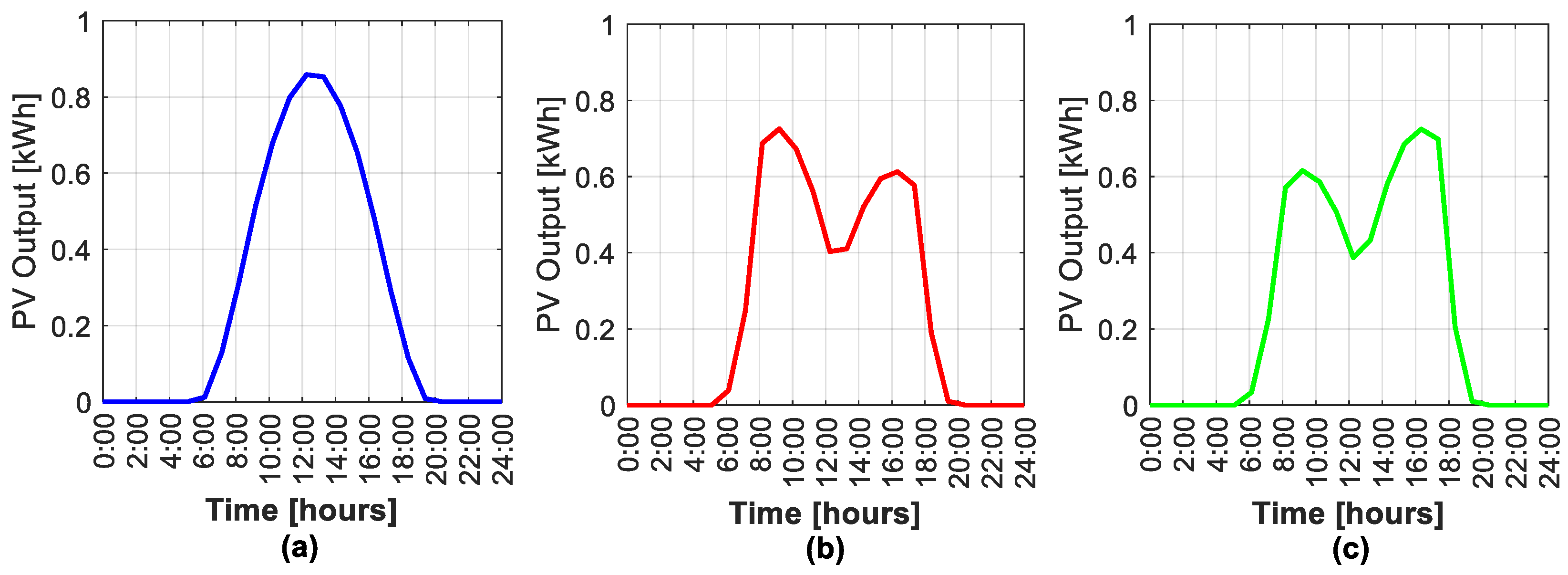
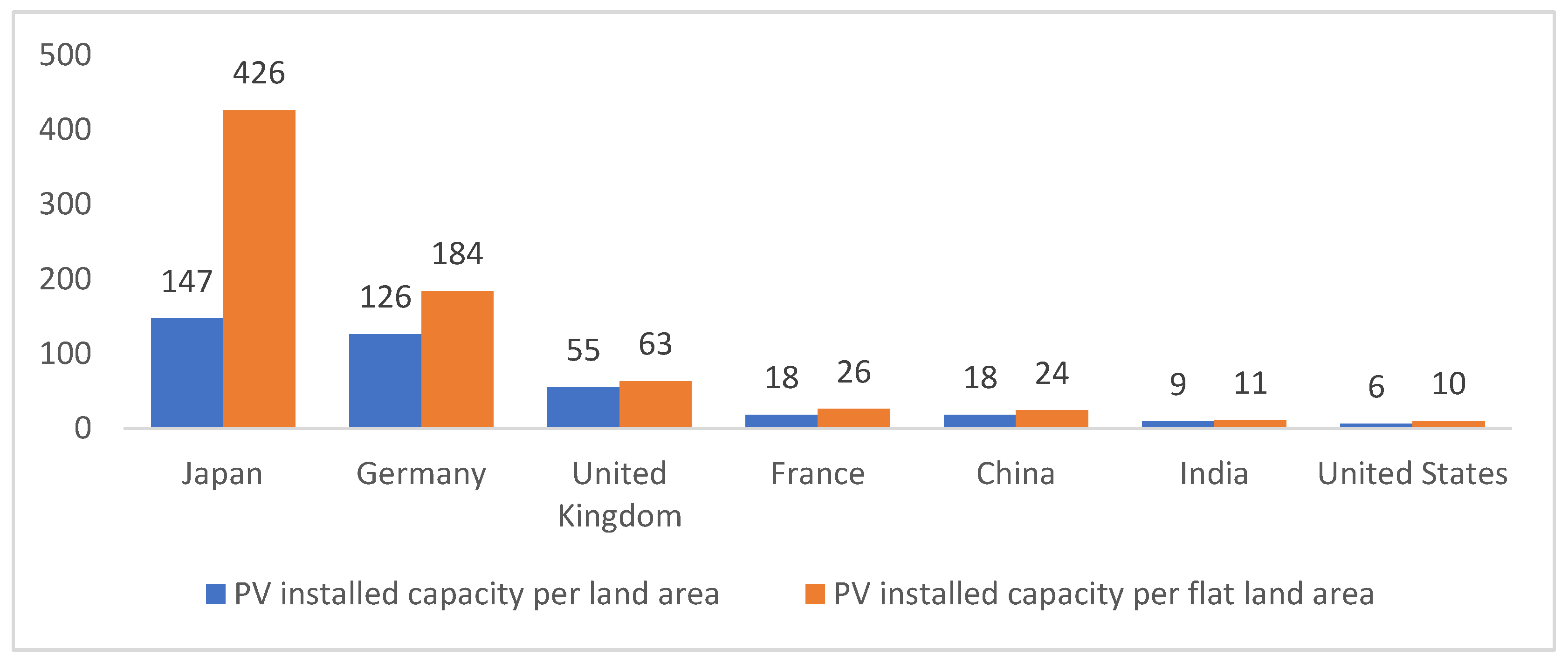
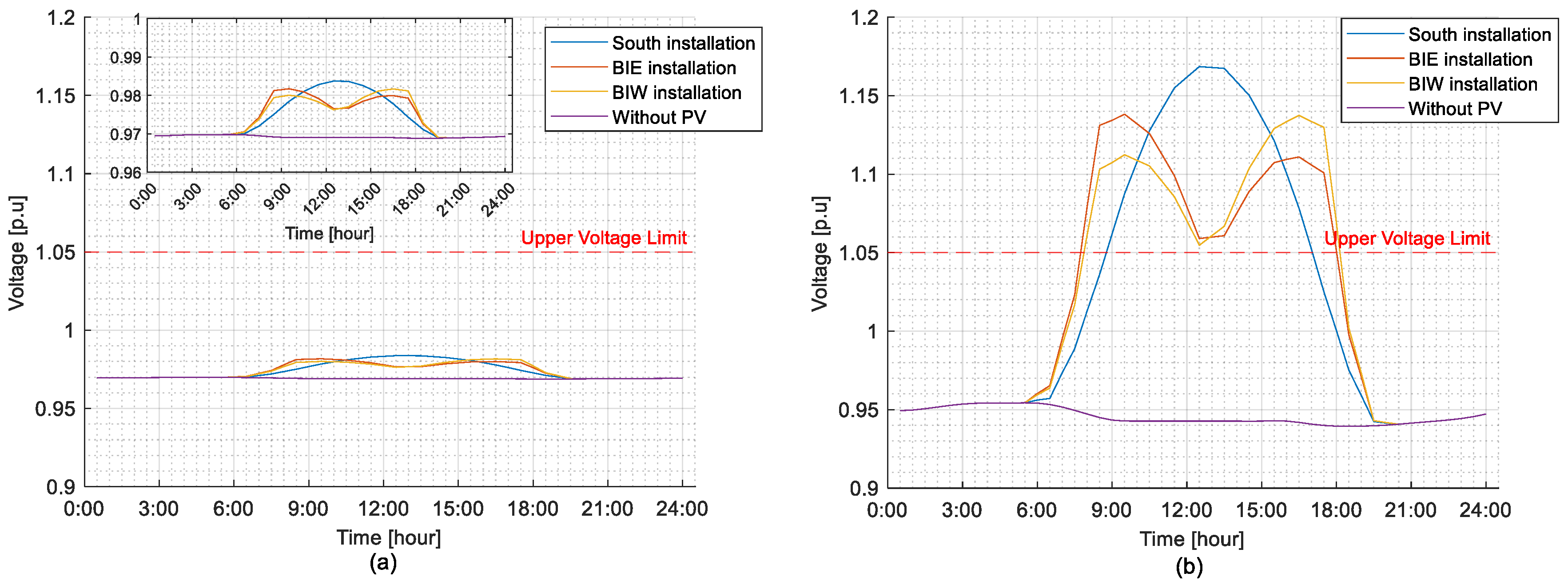

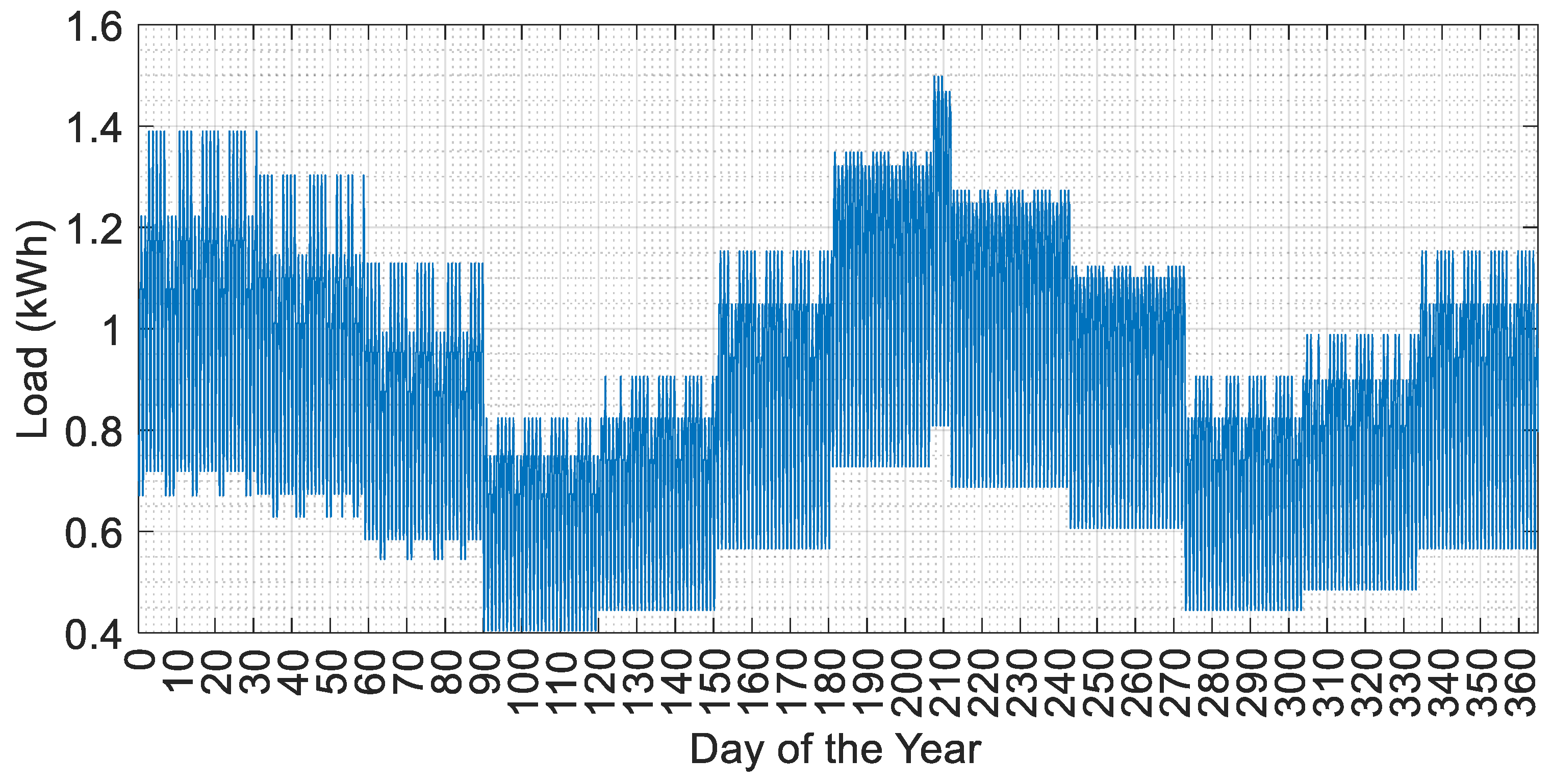

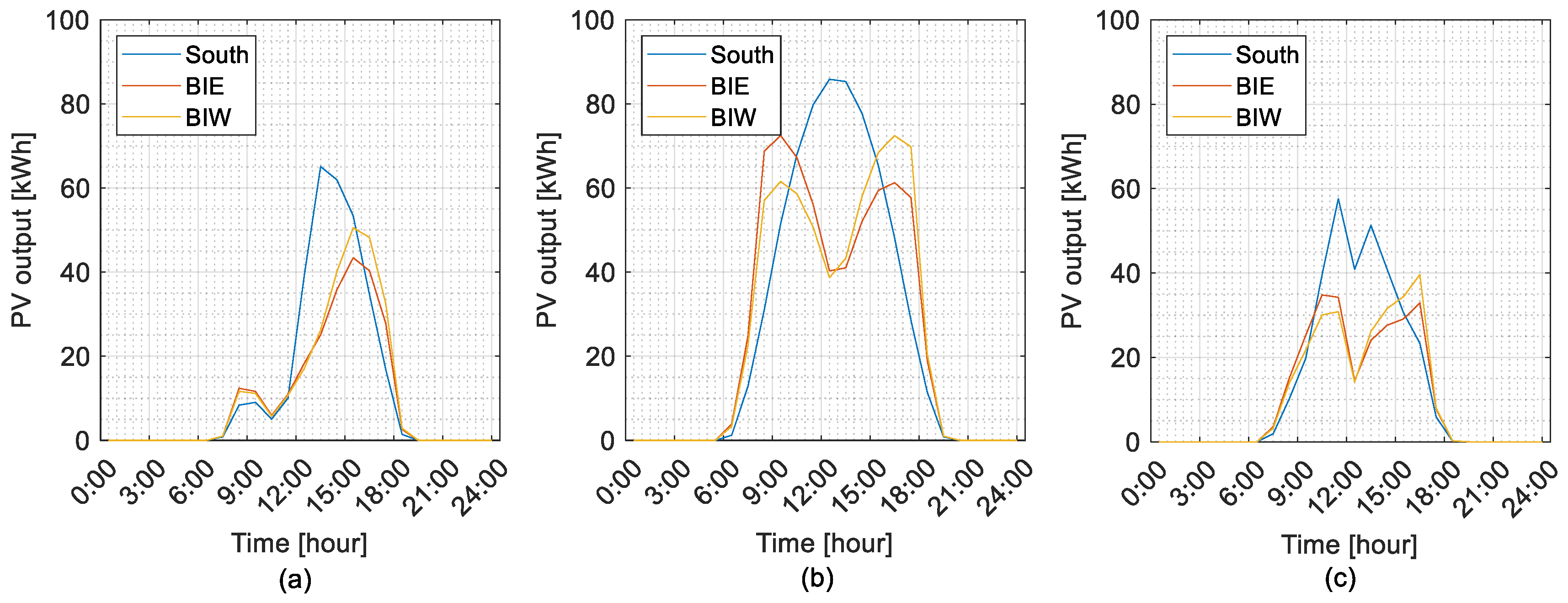
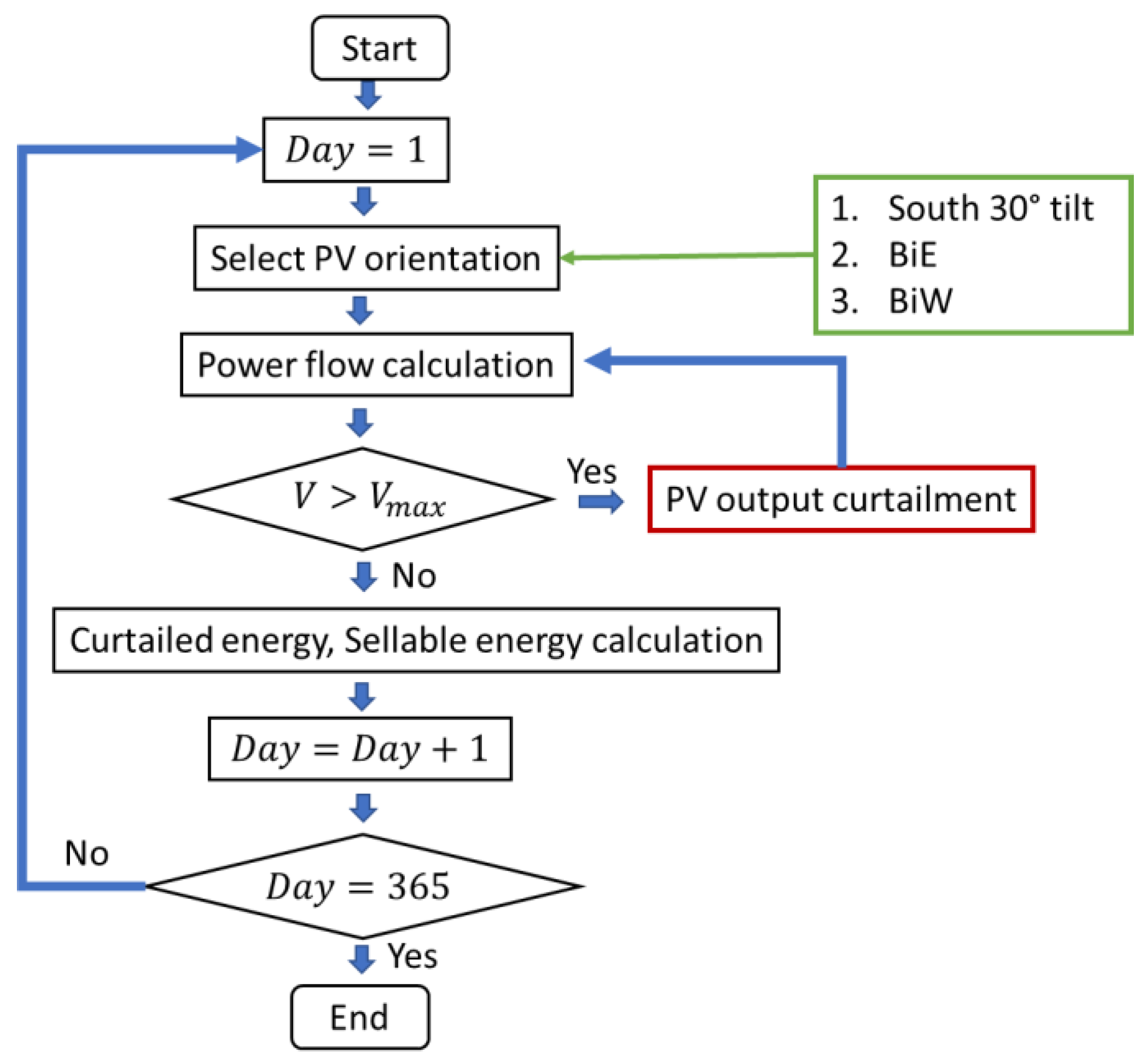







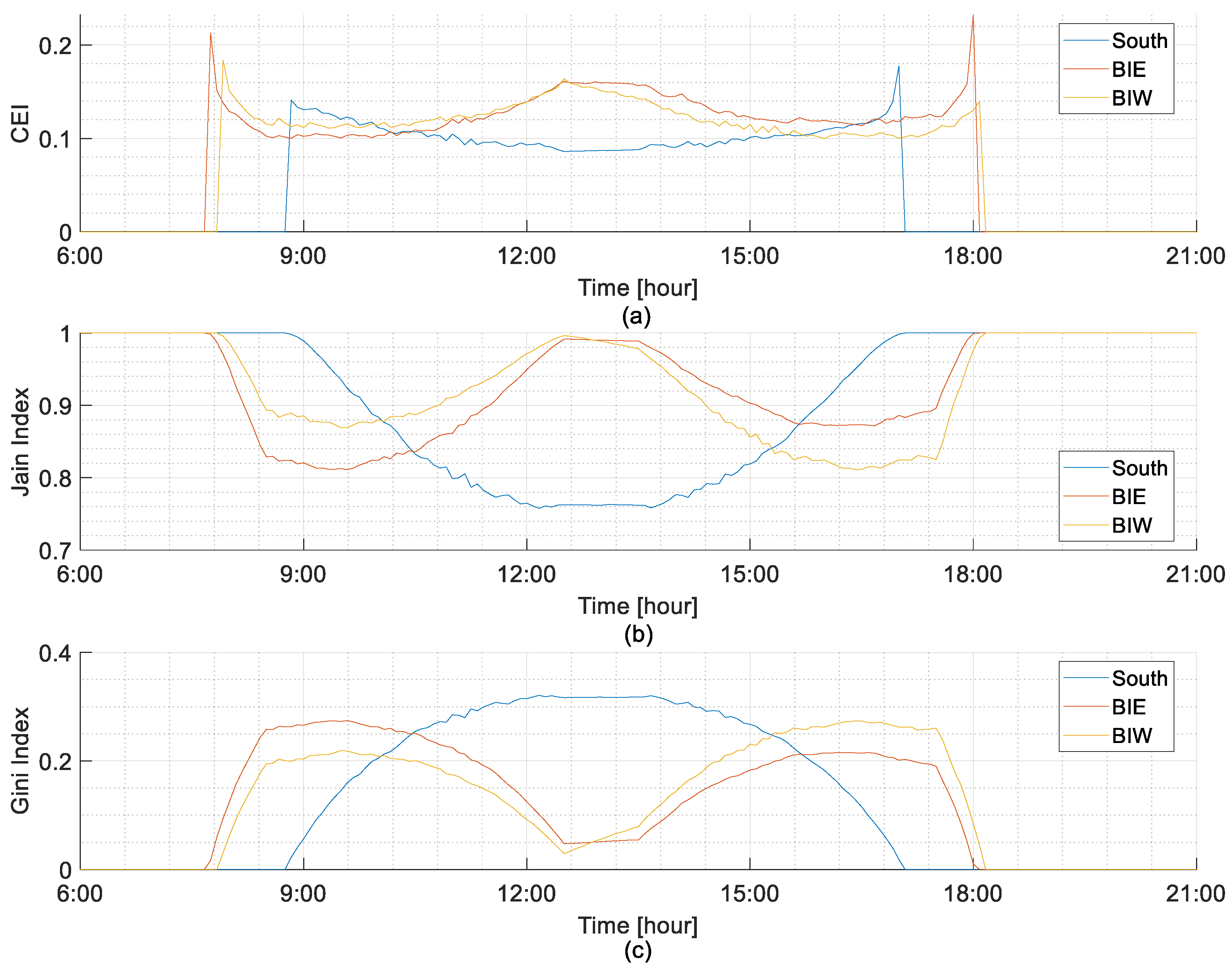
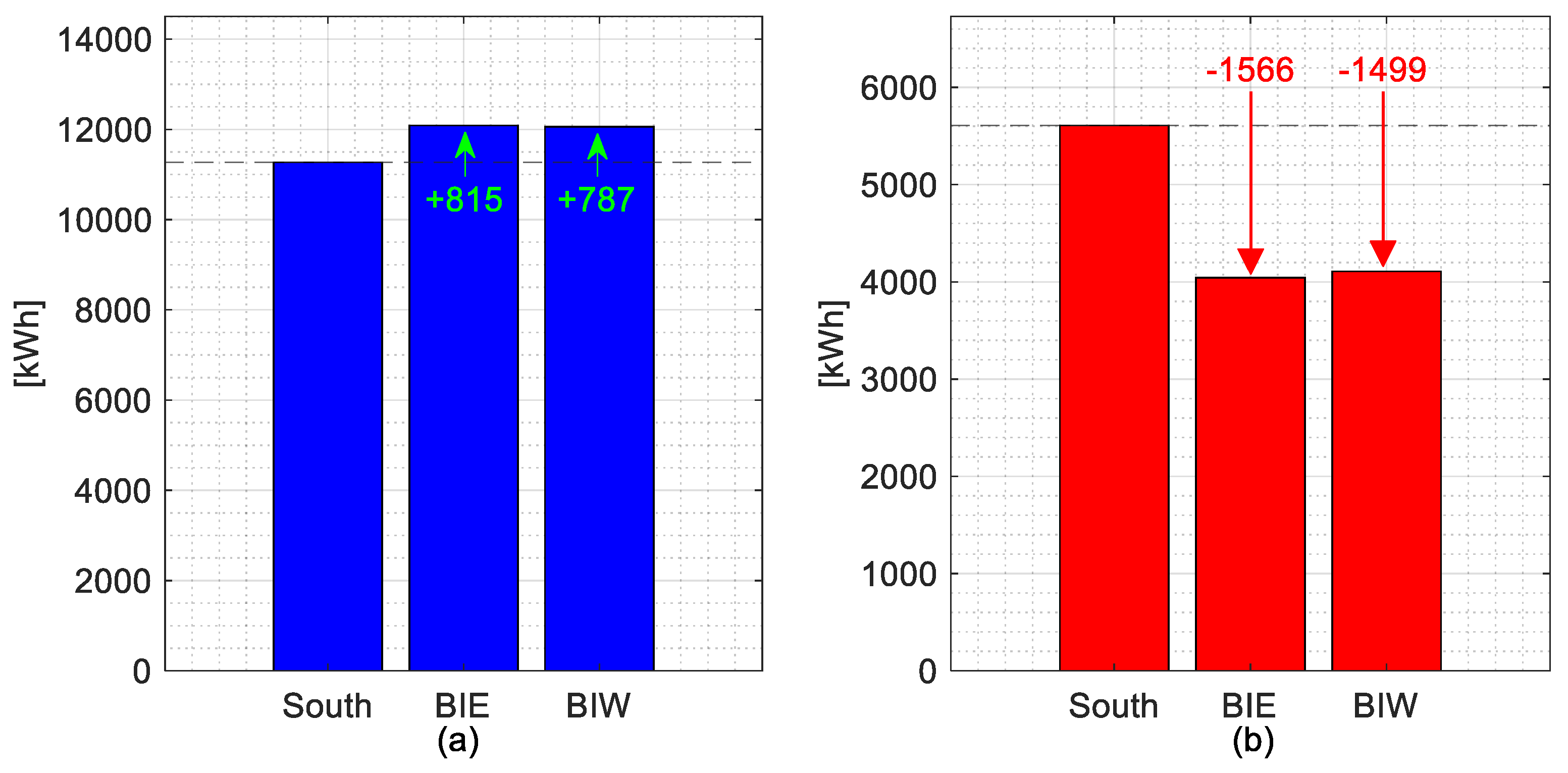
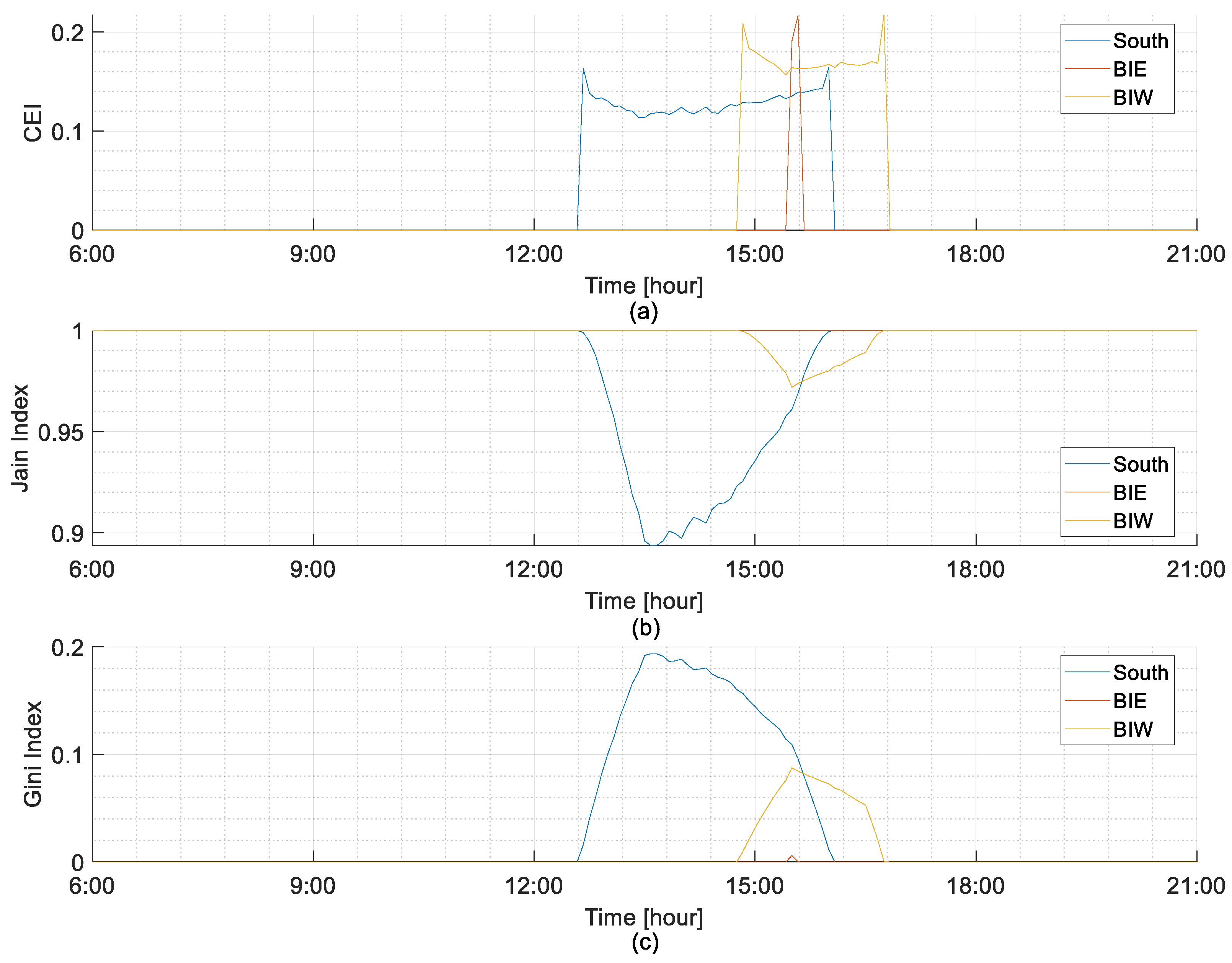
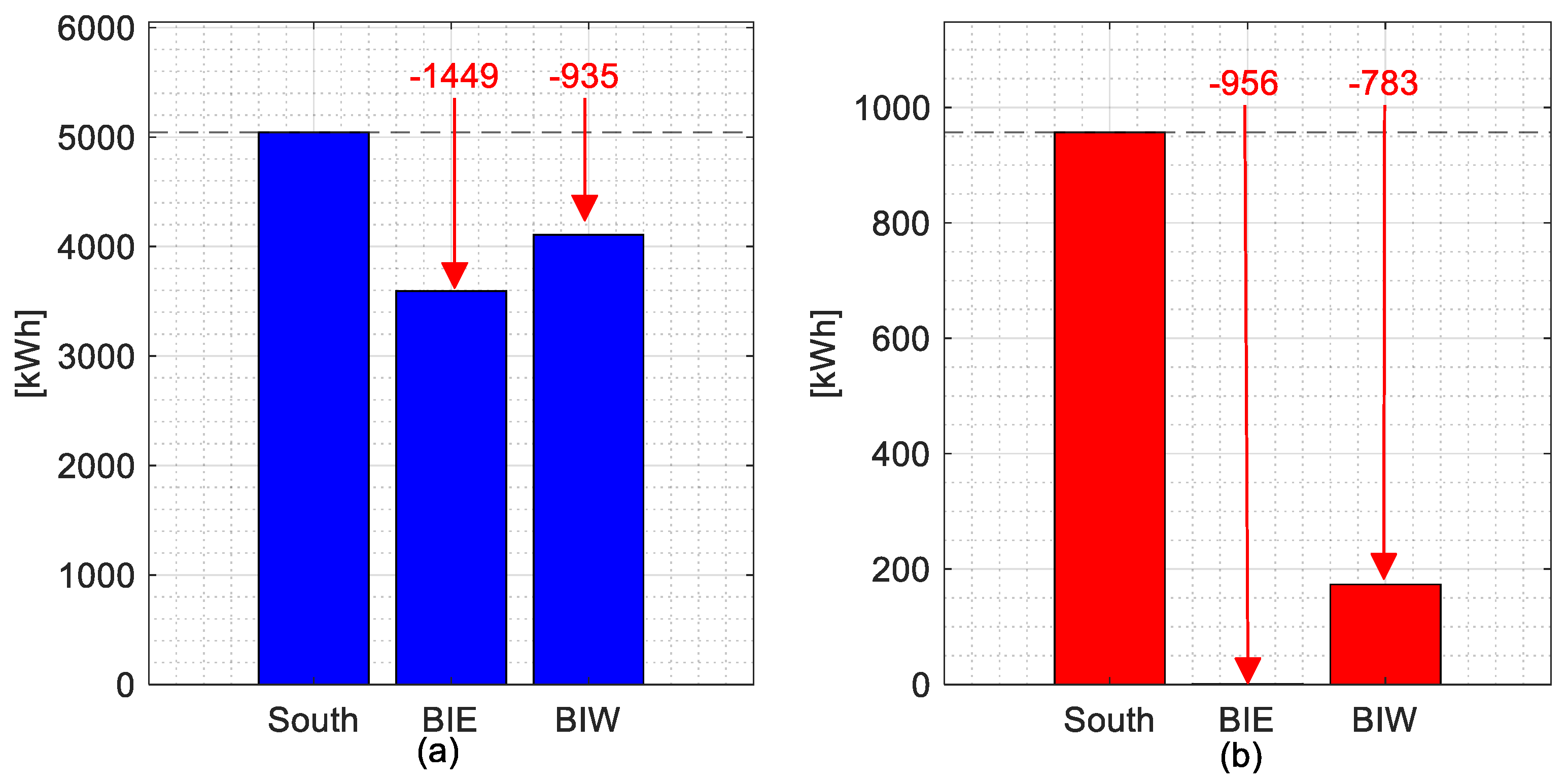
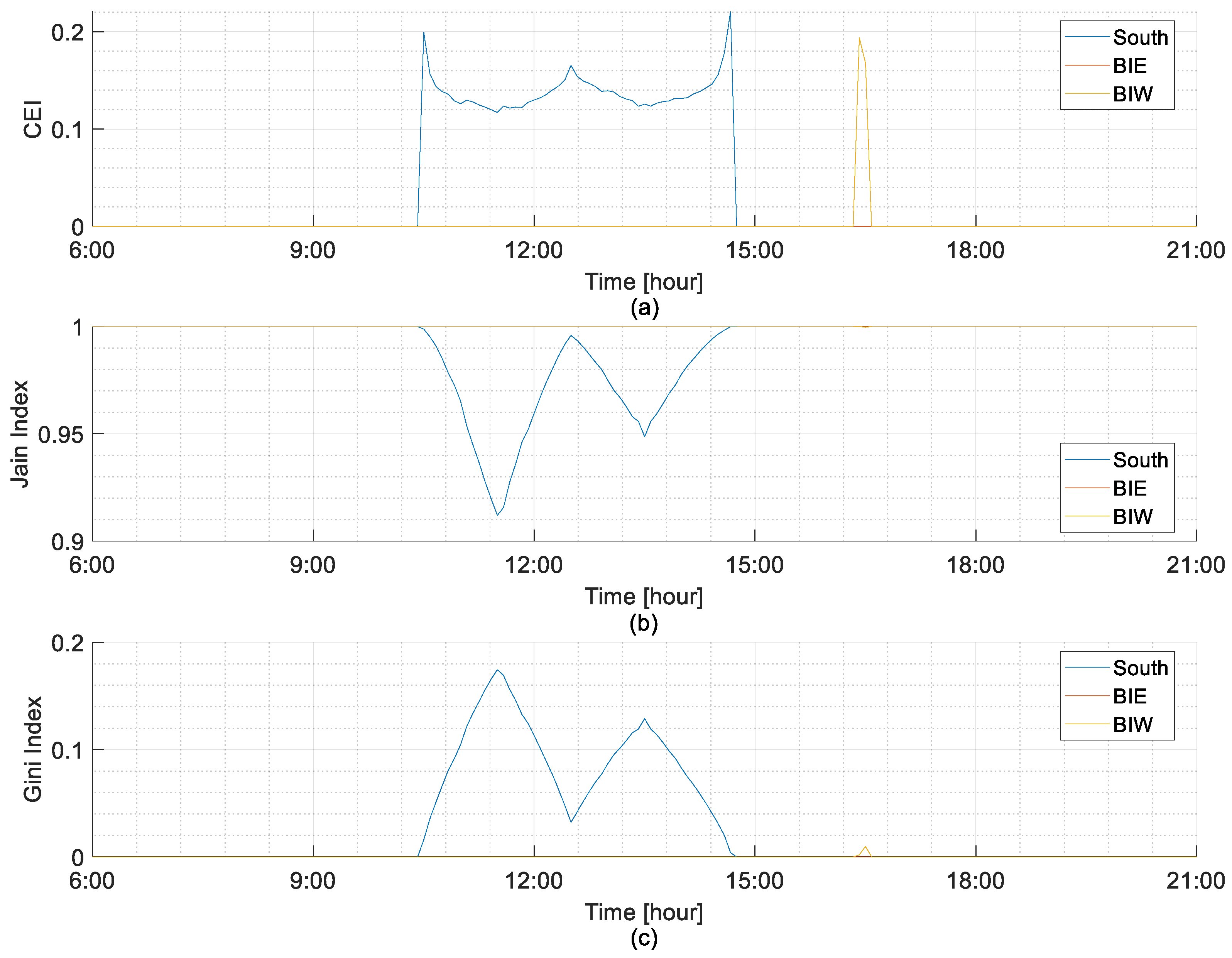

| Parameter | Value |
|---|---|
| LRT installed capacity | 10 MVA |
| Reference voltage | 6.6 kV |
| Line type | ALOE32 |
| Line impedance | 0.928 + j 0.415 Ω/km |
| Susceptance | 2.844 × 10−6 S/km |
Disclaimer/Publisher’s Note: The statements, opinions and data contained in all publications are solely those of the individual author(s) and contributor(s) and not of MDPI and/or the editor(s). MDPI and/or the editor(s) disclaim responsibility for any injury to people or property resulting from any ideas, methods, instructions or products referred to in the content. |
© 2025 by the authors. Licensee MDPI, Basel, Switzerland. This article is an open access article distributed under the terms and conditions of the Creative Commons Attribution (CC BY) license (https://creativecommons.org/licenses/by/4.0/).
Share and Cite
Itote, F.M.; Shigenobu, R.; Takahashi, A.; Ito, M.; Faggianelli, G.A. Enhancing Fairness and Efficiency in PV Energy Curtailment: The Role of East–West-Facing Bifacial Installations in Radial Distribution Networks. Energies 2025, 18, 2630. https://doi.org/10.3390/en18102630
Itote FM, Shigenobu R, Takahashi A, Ito M, Faggianelli GA. Enhancing Fairness and Efficiency in PV Energy Curtailment: The Role of East–West-Facing Bifacial Installations in Radial Distribution Networks. Energies. 2025; 18(10):2630. https://doi.org/10.3390/en18102630
Chicago/Turabian StyleItote, Francis Maina, Ryuto Shigenobu, Akiko Takahashi, Masakazu Ito, and Ghjuvan Antone Faggianelli. 2025. "Enhancing Fairness and Efficiency in PV Energy Curtailment: The Role of East–West-Facing Bifacial Installations in Radial Distribution Networks" Energies 18, no. 10: 2630. https://doi.org/10.3390/en18102630
APA StyleItote, F. M., Shigenobu, R., Takahashi, A., Ito, M., & Faggianelli, G. A. (2025). Enhancing Fairness and Efficiency in PV Energy Curtailment: The Role of East–West-Facing Bifacial Installations in Radial Distribution Networks. Energies, 18(10), 2630. https://doi.org/10.3390/en18102630






